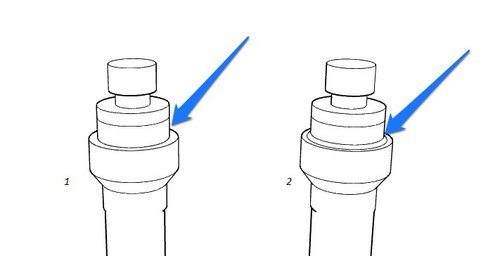Difference between revisions of "Implant Direct Bar Abutment®"
| Line 10: | Line 10: | ||
*OPT-6201 NON E TYPE A | *OPT-6201 NON E TYPE A | ||
*OPT-6201 NON E ZR TYPE A | *OPT-6201 NON E ZR TYPE A | ||
| + | *OPT-6201 NON E TYPE B | ||
| + | *OPT-6201 NON E ZR TYPE B | ||
= Clarifying Notes = | = Clarifying Notes = | ||
| Line 15: | Line 17: | ||
;E = Engaging. | ;E = Engaging. | ||
;NON E = Non Engaging. | ;NON E = Non Engaging. | ||
| − | ;TYPE A = | + | ;TYPE A = the connection is deeper and it is advised to use in cases with good parallelism. |
| + | ;TYPE B = the connection is shorter and it is advisable to use in cases of bad parallelism. | ||
;ZR = the connection is for zirconium structures | ;ZR = the connection is for zirconium structures | ||
It is advisable to test these options in order to choose the most appropriate to each one when needed. | It is advisable to test these options in order to choose the most appropriate to each one when needed. | ||
[[File:OPT-6200.jpg|frame|left|]] | [[File:OPT-6200.jpg|frame|left|]] | ||
Latest revision as of 14:44, 9 December 2015
Implant Direct Bar Abutment®
We have one size.
- OPT-6201 - ∅ 4,2
We have the following options in the Implant Library:
OPT-6201
- OPT-6201 NON E TYPE A
- OPT-6201 NON E ZR TYPE A
- OPT-6201 NON E TYPE B
- OPT-6201 NON E ZR TYPE B
Clarifying Notes
- E = Engaging.
- NON E = Non Engaging.
- TYPE A = the connection is deeper and it is advised to use in cases with good parallelism.
- TYPE B = the connection is shorter and it is advisable to use in cases of bad parallelism.
- ZR = the connection is for zirconium structures
It is advisable to test these options in order to choose the most appropriate to each one when needed.
